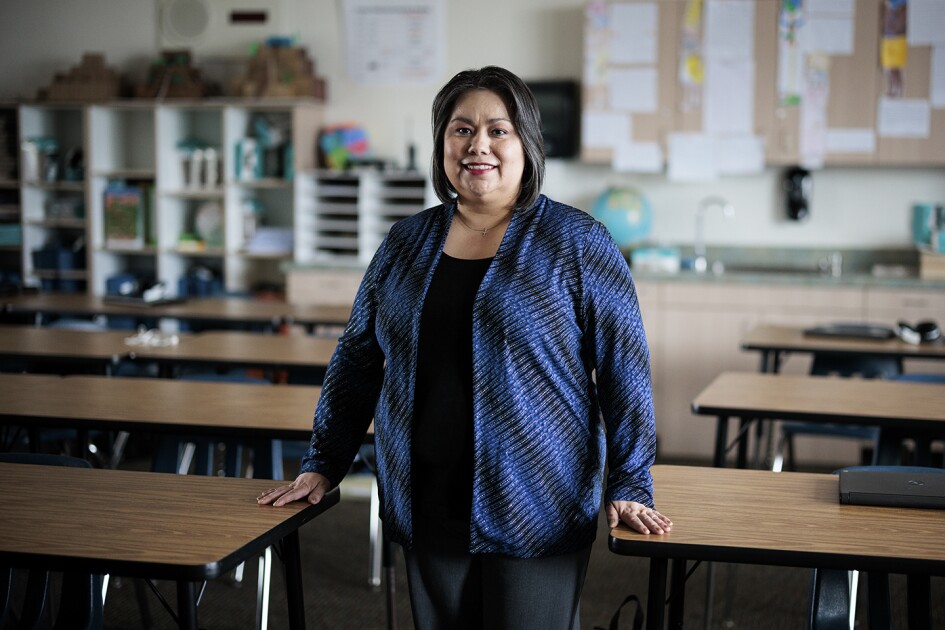About 3 in 10 teachers think that the curriculum their school or district uses is too challenging for their students, according to a new survey from the RAND Corporation.
In some cases, the teachers who share this perception are less likely to use the materials that are recommended or required, the survey finds.
These data are the latest findings from RAND’s annual American Instructional Resources Survey, which asks a nationally representative panel of teachers about their use of classroom materials and curricula. About 7,000 math and English/language arts teachers were included in this sample.
These results come as momentum for high-quality curricula—standards-aligned materials that engage students in rigorous work—has grown across the country.
Nationally, the Council of Chief State School Officers has convened a network of states attempting to encourage districts to make this shift. And some school systems have recommitted to teaching all students grade-level content, despite potential gaps in their knowledge or skills, as an effort to address pandemic-related learning loss.
“When we think about the new types of materials that districts are implementing, we’ve seen people saying that these materials are more ‘rigorous’ than what people were doing before,” said Sy Doan, an associate policy researcher at RAND, and one of the authors of the study.
Teachers’ perceptions about these curriculum changes, and whether students can meet the higher standards they embody, can influence whether new materials will actually be used, he said.
But it’s possible that teachers’ perspectives are malleable, Doan added—and that certain school and district policies could make teachers feel more comfortable.
The survey found that teachers who reported that their professional learning helped them use their curriculum materials were significantly less likely to say that those materials were too difficult for students.
The finding suggests the importance of districts building a coherent instructional system that includes ongoing training and shared understanding of student expectations, rather than just dropping a new curriculum on teachers’ doorsteps, Doan said.
Creating these systems is a way to communicate to teachers that new materials won’t be replaced again in a few years, he added. “We’re indicating, ‘These materials are here to stay,’” he said.
Teachers’ perception of challenge varied by school, student characteristics
Overall, most teachers—59 percent in the 2022-23 school year—said that the curriculum required or recommended by their schools was just right for their students.
Those numbers varied somewhat by subject area and grade level.
In math, these perceptions of challenge were related to how often teachers used the materials. Among teachers who thought the curriculum was matched to their students’ abilities, 47 percent used it for the majority of their instructional time. Among teachers who thought their curriculum was too difficult, that share dropped to 34 percent, suggesting that they brought in outside resources.
These differences didn’t show up in English/language arts, where just over one-third of teachers reported they used school- or district-provided materials most of the time, regardless of their perception of those materials.
The researchers aren’t sure what’s causing this different pattern between subjects, said Doan.
Teachers’ perceptions also differed depending on the income level and race of their students.
Educators who worked in high-poverty schools were more likely than their peers in low-poverty schools to say that materials were too difficult for their students—35 percent versus 23 percent. And while 34 percent of teachers who worked in schools with predominantly students of color said the curricula was too hard for their students. Only 23 percent of teachers in predominantly white school said the same.
Again, the survey data alone doesn’t explain what causes these disparities, Doan said, but there are a few possibilities. Teachers in high-poverty schools were more likely to say that they used standards-aligned materials—half of them did, compared to only 41 percent of teachers in low-poverty schools. Part of this difference in perception could come down to a difference in the materials themselves, Doan said.
But it could also relate to teacher preconceptions about their students—teachers believing that students from low-income families or students of color are less able to take on challenging work, or that they have to make up more ground to achieve grade-level expectations.
“That perceptual issue, that’s a very reasonable hypothesis that we would love to explore further,” Doan said.
Other research suggests that teachers tend to give students of color and students from low-income families less challenging work than they give their peers.
Education experts have argued that this disparity can compound existing inequalities, creating a situation in which some children are never given the opportunity to demonstrate that they can do high-level work.









